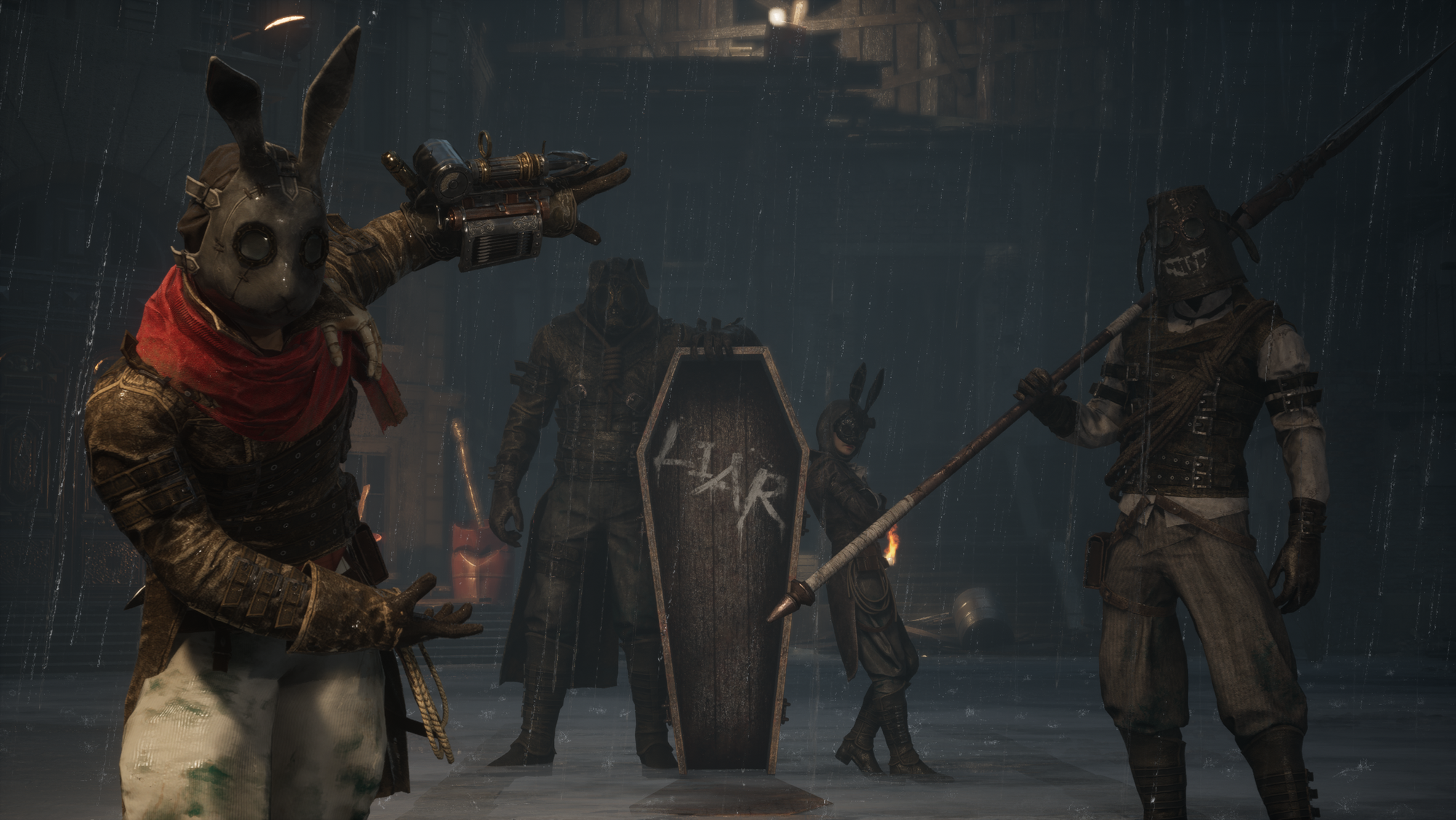What's Good About Lies of P

Lying is an interesting thing. Because it means to tell either a small white lie to protect someone’s feelings or a big foundational lie that changes the nature of how you look at someone or something, it’s also within human nature to emulate and adapt stories. To do so is paramount to how humanity has told stories and shaped cultures since the dawn of civilization. I bring this up specifically because of the subject of today’s post, Lies of P by Round 8 Studios and Neowiz. Lies of P is a steampunk horror-themed action RPG in the same vein as the works of FromSoftware, specifically Bloodborne, based loosely on The Adventures of Pinocchio by Carlo Coloddi. I have a weird relationship with games that try to do FromSoft’s style of RPG in that for the most part, I think that they kind of miss what makes them so special. Lies of P doesn’t fall into this trap and there is a great remixing of the Soulslike formula in here.
The game is set in and around the city of Krat, where puppets, autonomous androids who follow a Laws of Robotics style system called the Grand Covenant, have gone berserk and started killing the human residents in the city in an event known as the Puppet Frenzy. You play as the unnamed, but pretty much all-but-stated Pinocchio or P, as he wakes up and finds himself beckoned by a mysterious voice to find his father Geppetto and get to the bottom of the Puppett Frenzy. The basic premise sets up a good mystery that uses more conventional storytelling methods than FromSoft’s way of telling stories but with some of that technique mixed in as well. Cutscenes, NPC conversations, item descriptions and more are mixed in to tell an intriguing story of the city of Krat’s history, its culture, its people, its religious institutions, and more are all tied up in the discovery of the mysterious ore called Ergo that powers the puppets, the ensuing Industrial Revolution brought about by said puppets, and the eventual collapse therein. It’s all incredibly layered, with each of the elements playing off of each other in some cool ways, like how the remnants of the city’s militia known as Stalkers are essentially turning into roving gangs, carving up the city’s districts after most of them were killed in the initial outbreak of puppet attacks.

This is also where the Lying mechanic comes into play. P is a special puppet in that he can ignore the Grand Covenant and lie to those he speaks to. This leads to moments in side quests where you can either tell the truth and stay a puppet, or lie in a way that comforts others and eventually become a real boy, so to speak. These are also tied into the game’s endings and how the rest of the people you meet in the city and your base interact with you. There are even records you can find that you can listen to and even that affects your humanity. It’s small in the grand scheme of things, but this feels like one of the few instances where the player’s choices are affecting the narrative and the world around them and I love it to pieces. The remixing of the elements of Collodi’s Pinocchio ranges from the small like certain characters you meet being named after characters in the story like Polendina being the overseer of the Hotel Krat (the Firelink Shrine stand-in), the Fox and the Cat being stalkers you run into, and a clever repurposing of both the Ringmaster and another character I won’t spoil, to the larger stuff like Geppetto’s involvement with the events leading up to the game and Sophia the Blue Fairy Expy, becoming Lies of P’s version of the Maiden in Black from Demon’s Souls or more recently Melina from Elden Ring. It is all well-treaded territory, and it does it well. I was just wishing for something a bit more subversive, even though I like what’s here already. But I will say that the story that it does tell using those elements is a very good one and it’s worth seeing through to the end.
While its worldbuilding is a bit on the safe side, I cannot say the same about the actual video game part of Lies of P. The way that I would best describe Lies of P is “We Have Bloodborne at Home”. I mean this as the highest form of compliment because Bloodborne is my favourite of the Soulslike/Borne genre and FromSoftware’s output specifically. Lies of P takes a lot of the more aggressive pacing from Bloodborne’s faster dodges and unique weapons and mixes them with both the slower and more methodical pace of Dark Souls’s exploration and the guarding and parrying of Sekiro. This gives you a mashup of styles to see where Round 8 is coming from. The levels are the different sections of the city of Krat and each one is a chapter of the narrative bookended by a boss fight. There are a few shortcuts that loop the levels back into themselves that lead to the stargazers, the game’s bonfire equivalent. Aside from some hidden secrets here and there, the level design is rather simple, focusing more on the challenges that combat throws at you instead to keep you on your toes.
In between each of these, you go back to the hotel to give Sophia the Ergo (the game’s equivalent of souls) you collect to level up. Like Bloodborne, you only have six stats to contend with your health, stamina, carrying capacity and the damage-dealing stats of Motivity (Strength), Technique (Skill/Dexterity), and Advanced (Arcane/Status effects). I’m focusing on doing a balanced spread of stats focused mainly on Motivity because I like having a lot of health and stamina to go along with my big bonking sticks and it’s working super well. And this ties into how weapons work. They are split into two parts: blades and handles. The Blades determine the damage type of the weapon and the handle determines the move set of the weapon. This makes for an incredible level of customization because all of the weapons you find in the world can be mixed and matched for different properties. My favourite method is to take a greatsword blade and put it on the handle of a faster-moving weapon so you can have the damage and speed of both.

Normally, this kind of thing would undermine combat balance, but that’s not the case here. Lies of P uses a mix of enemy aggression, the system’s combat mechanics and brilliant uses of both haunted house-style enemy placement and the stat scaling to keep you on your toes. Enemies in Lies of P are fast. Like Really Fast. But this is where blocking comes in because you can get perfect guards off that can prevent you from losing health and weapon durability. Doing so enough staggers your enemies to go into a stunned state that allows for an off-brand Visceral Attack for huge damage, which can make or break your performance against larger enemies and bosses.
Overall, the combat’s pacing feels more like Sekiro’s than Bloodborne’s when you look more closely at it. The key differentiator is that there's greater importance placed on blocking and it feels more like there’s more margin of error compared to Sekiro because I’ve barely died in my run. The enemy placements are also something I’ve noticed in my time playing. Enemies are also placed in locations that are just out of your view without some kind of camera manipulation to reveal them and it sets up a lot of surprises that I love. It has me second-guessing if I’m gonna get jumped when looking for items and that’s a weird sense of paranoia that I appreciate when playing games like this.

And then there’s stuff like the P-Organ, which is an extra layer of upgrades that gives you stuff like extra charges for Fable Arts (which are just weapon arts/Ashes of War), boss weapons being the game’s version of Trick Weapons, your Legion Arm, which is your Shinobi Prosthetic and had unique variants like a flamethrower, an extra shield, a built-in stun gun, an acid thrower, a Scorpion from Mortal Kombat style harpoon launcher, the Stake Driver but good, and a sticky bomb launcher and the Grinder which lets you replenish your weapon’s durability in combat and imbue elemental effects to your weapons. These are all small things that add to and enhance the gameplay loop and all make for nice additions.
Lies of P is so far the first and only game that takes what FromSoftware has done with their output from Demon’s Souls to Elden Ring and not only studied what made those games so good but also uses those lessons learned to make their own experience stronger for it. While the worldbuilding and exploration could have been a bit more fleshed out, everything from a combat standpoint has been aces. It’s shaped up to be one of my favourite games this year and the standard by which I judge all other games in this genre not made by FromSoftware. It’s that good.





